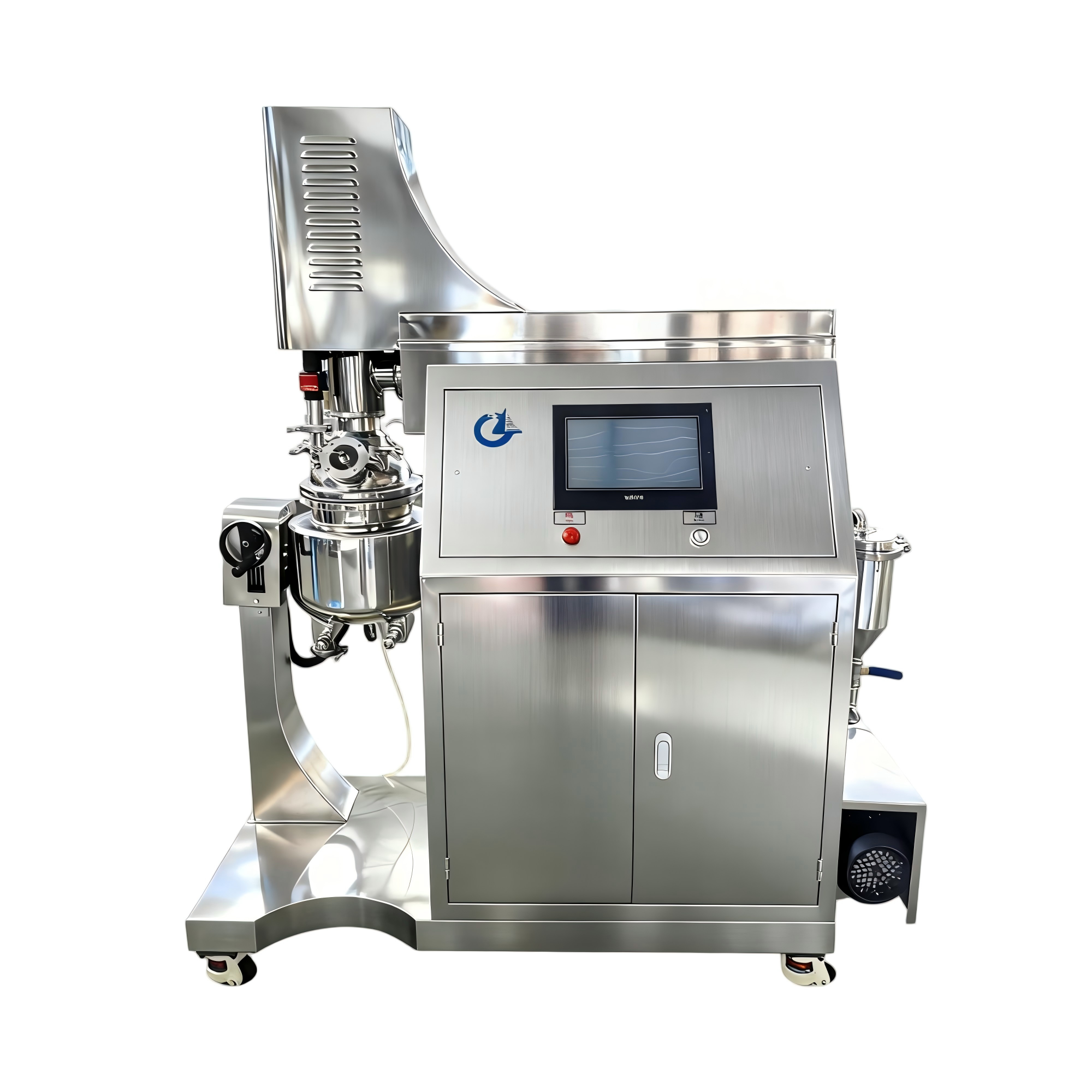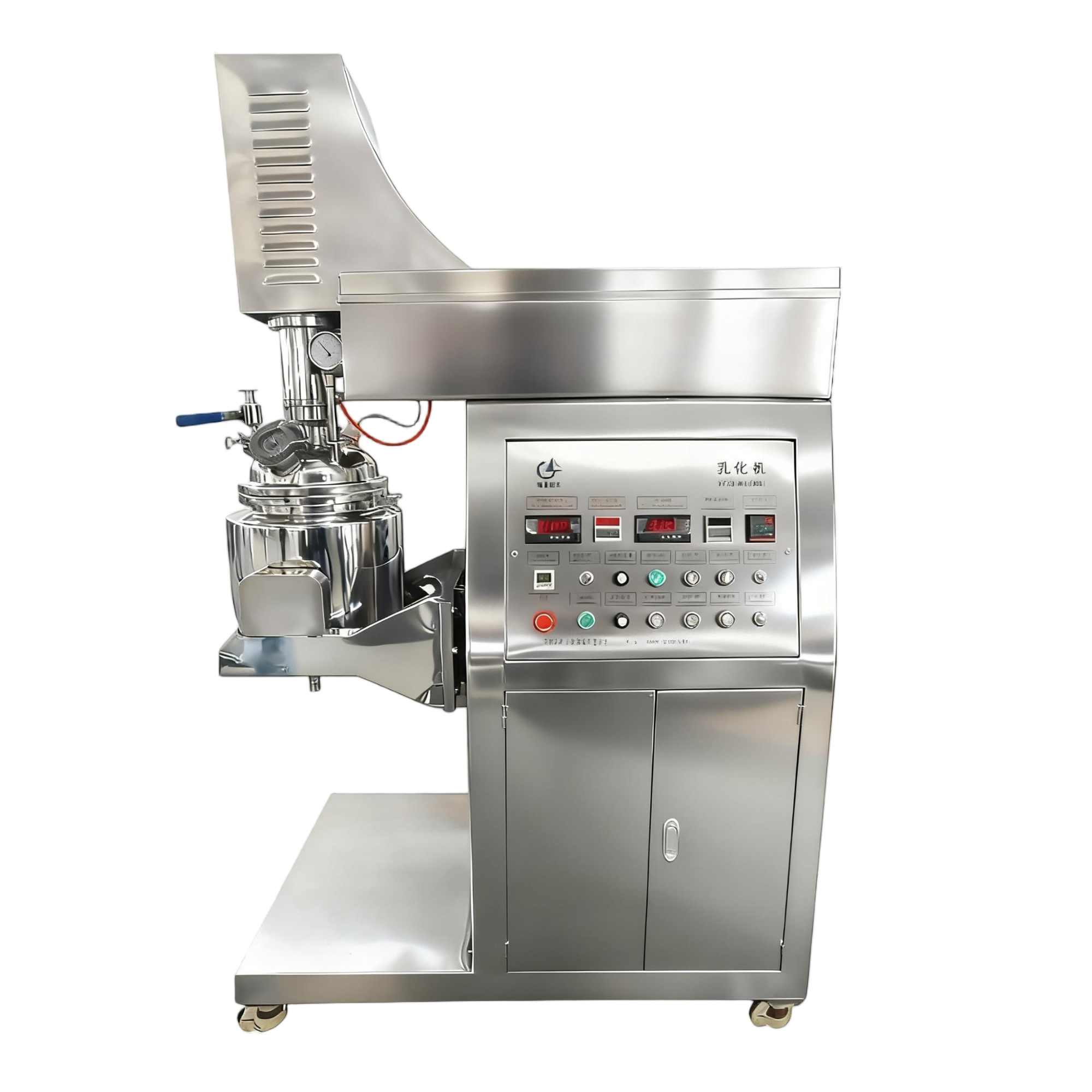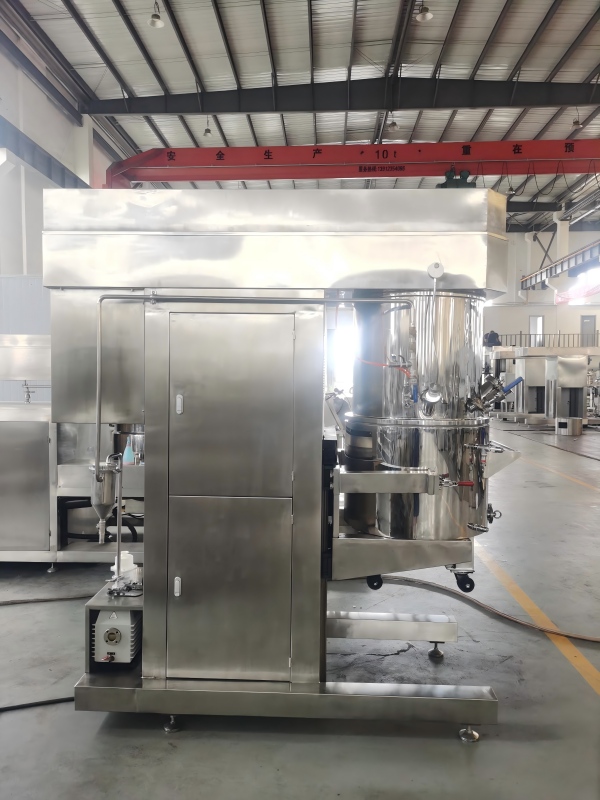Common Troubleshooting Methods for Vacuum Homogenizing Emulsifier - Save for Future Use
Customers who frequently use emulsifiers are well aware that during the long-term operation of the equipment, it is inevitable to encounter some faults and problems that prevent the equipment from operating normally. Based on more than ten years of experience in the design and production of vacuum homogenizing emulsifiers, Wuxi Gangben Machinery Manufacturing Co., Ltd. has summarized and sorted out the common faults and troubleshooting methods of vacuum homogenizing emulsifiers, which are presented as follows for customers to save and use when needed.
Vacuum Leakage: This fault may be caused by three main reasons. Firstly, the valves are not closed properly, or the vacuum valve on the pot cover is not opened. Secondly, the sealing ring is damaged, leading to leakage. Thirdly, the vacuum pump is not operating normally. To solve this problem, you should first close all valves; if the fault persists, replace the damaged sealing ring; finally, if the issue is with the vacuum pump, overhaul it by referring to the liquid vacuum pump instruction manual.
Motor Not Starting: When the motor fails to start, the possible causes include a broken power cord, a faulty motor bearing, or a sintered homogenizing rotor. The troubleshooting steps are as follows: first, check the wiring to ensure there is no breakage; if the wiring is intact, replace the faulty motor bearing; finally, check whether the homogenizing rotor rotates flexibly, and remove any foreign matter that may be jamming the homogenizing head or agitator.
Pump Fails to Generate Vacuum: There are three common causes for this situation. The first is the lack of working fluid; the second is severe leakage in the system; the third is an incorrect rotation direction of the pump. For troubleshooting, start by checking the working fluid level and replenish it if necessary; then, inspect the system and repair any leaking parts; if the problem lies in the rotation direction, replace two wires to change the rotation direction of the pump.
Current Circuit Breaker Trips When Motor Is Started: This fault is usually attributed to two factors: a short circuit in the motor windings or damage to the sliding bearing of the homogenizing rotor. To address this, first, check the motor windings (coils) to detect and repair any short circuits; if the windings are normal, replace the damaged sliding bearing of the homogenizing rotor.
Scraper Hits the Pot When Lifting/Lowering or Makes Metal Noise During Operation: The main causes of this issue are poor positioning of the scraper or inflexible rotation of the scraper seat, which gets stuck in an inappropriate position. The solution involves two key steps: first, adjust the positioning of the scraper accurately to ensure it is in the correct position; second, remove any dirt from the scraper seat and replace the pin shaft to restore flexible rotation of the scraper seat.
Oil in the Vacuum Pump Enters the Purifier and the Pot: This specific fault is typically caused by not closing the vacuum valve on the purifier when turning off the vacuum pump. The troubleshooting method is straightforward: when shutting down the vacuum pump, always close the vacuum valve on the purifier first to prevent oil backflow.
News
- Latest News
- Solutions
- FAQ
Recommend Products
-
 5L Vacuum Emulsifying Homogenizer Mixer
5L Vacuum Emulsifying Homogenizer MixerThe 5L vacuum emulsifying mixer is a device designed for emulsifying and mixing various substances in a vacuum environment. This equipment is equipped with a mixing tank with a capacity of 5 liters and is widely applied in industries such as food, pharmaceuticals, cosmetics, and pesticides.
-
 5L PLC-Screen Vacuum Emulsifying Mixer
5L PLC-Screen Vacuum Emulsifying MixerThe 5L PLC-Screen Vacuum Emulsifying Mixer is a device designed for emulsifying and mixing various substances in a vacuum environment. This equipment is equipped with a mixing tank with a capacity of 5 liters and is widely applied in industries such as food, pharmaceuticals, cosmetics, and pesticides.
-
 10L Vacuum Emulsifying Homogenizer Mixer
10L Vacuum Emulsifying Homogenizer MixerThe 10L Vacuum Emulsifying Mixer is a device used for emulsifying and mixing various substances in a vacuum environment. It is commonly used in industries such as food, cosmetics, and pharmaceuticals.


 English
English Russian
Russian French
French Spanish
Spanish Portuguese
Portuguese Korean
Korean Japanese
Japanese Thai
Thai
![Installation, Commissioning, Maintenance and Upkeep of 20L Double Planetary Mixer [Technical Version]](/web/uploads/image/20251115/Rz1O1nQrou307600Q66XxAP07No478kl.webp)




